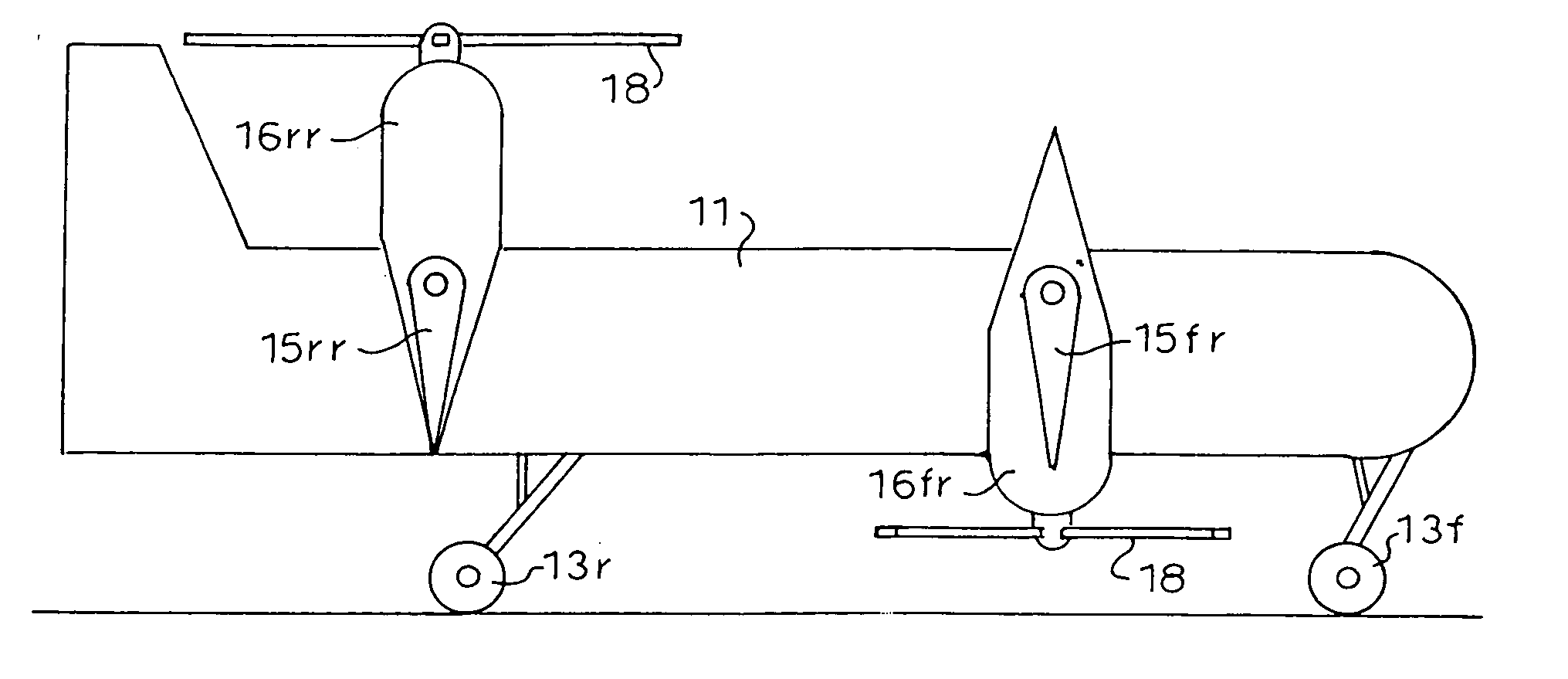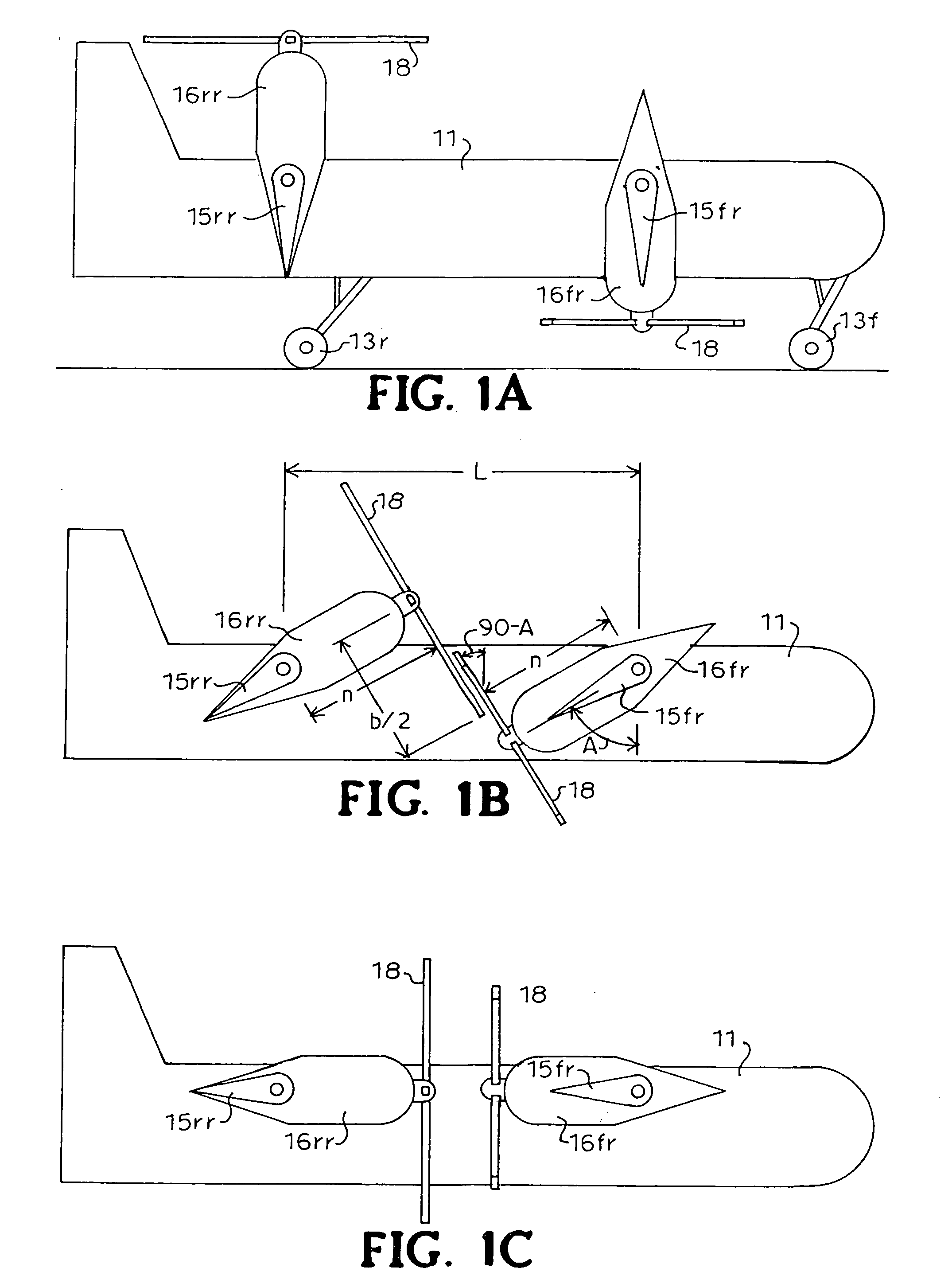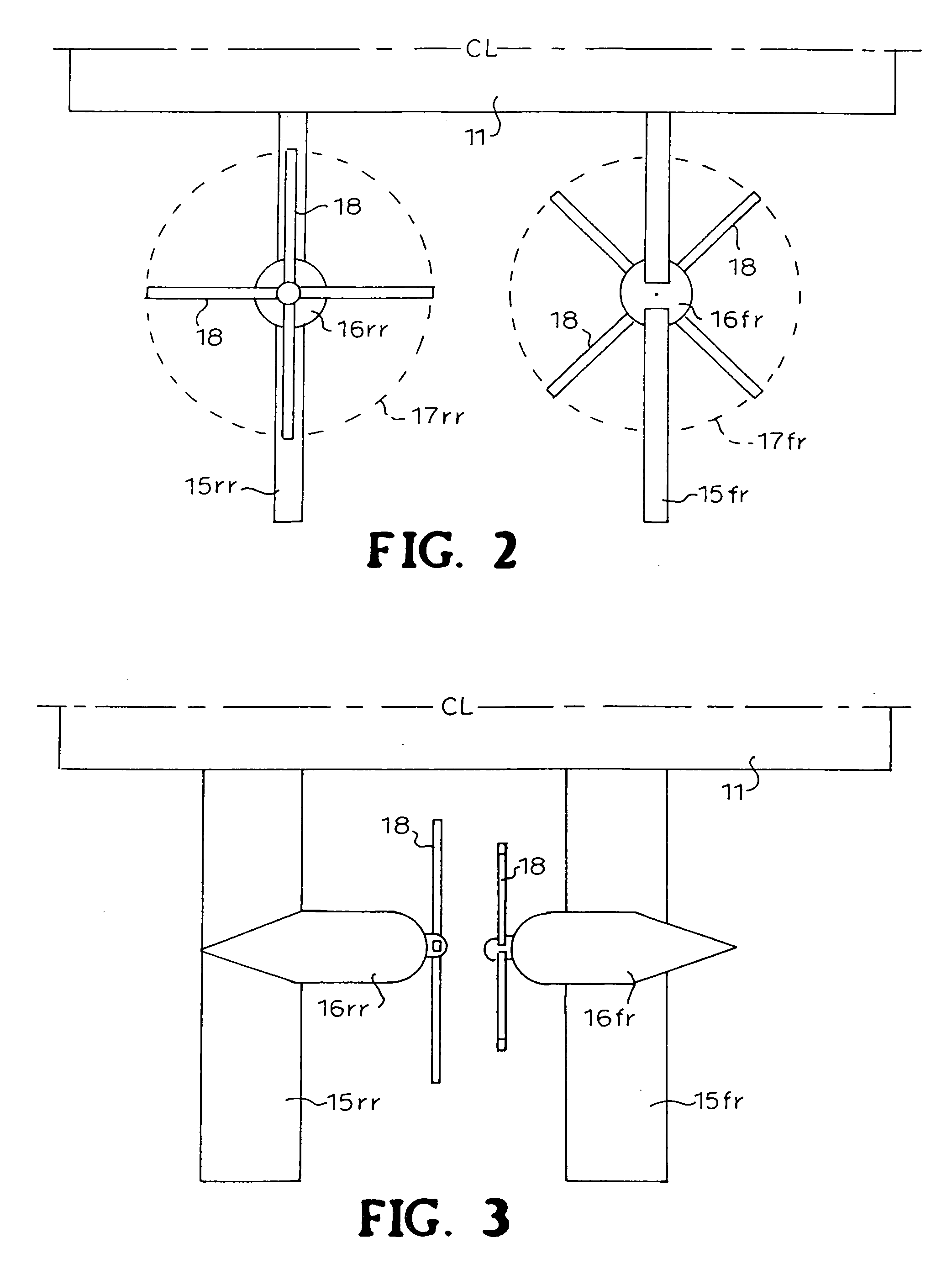Counter-quad tilt-wing aircraft design
a technology of tilt-wing aircraft and wings, which is applied in the direction of vertical landing/take-off aircraft, rotorcraft, vehicles, etc., can solve the problems of limiting the top speed in the level flight regime, affecting the flight speed of the aircraft, so as to reduce the risk of wake turbulence, confirm the validity of the aeropropulsive effect, and reduce the risk of turbulen
- Summary
- Abstract
- Description
- Claims
- Application Information
AI Technical Summary
Benefits of technology
Problems solved by technology
Method used
Image
Examples
Embodiment Construction
[0013] Referring now to FIGS. {1A, 1B, 1C} featuring elevation views of the aircraft right side, it is seen that in the VTOL configuration (FIG. {1A}) the rear wing-propulsor unit is pointed upward while the fore wing-propulsor unit is pointed downward. In each case the air is directed downward which is to say the rear propulsor is a “tractor” rotor while the fore propulsor is a “pusher” rotor. In the transition maneuver, both units rotate clockwise, directing air progressively rearward. The rotor planes or power discs pass through each other (FIG. {1B}) without collision because of their opposite directions of rotation and under the assumptions that (1) they are geared together as mesh-rotors and (2) the rotor diameter b is not large enough to allow blade contact of opposite hubs during pass-through. Finally, the power discs are aligned and relatively adjacent, as counter-rotating propellers, in level flight (FIG. {1C}). The before-and-after plan views of the configuration's right ...
PUM
 Login to View More
Login to View More Abstract
Description
Claims
Application Information
 Login to View More
Login to View More - R&D
- Intellectual Property
- Life Sciences
- Materials
- Tech Scout
- Unparalleled Data Quality
- Higher Quality Content
- 60% Fewer Hallucinations
Browse by: Latest US Patents, China's latest patents, Technical Efficacy Thesaurus, Application Domain, Technology Topic, Popular Technical Reports.
© 2025 PatSnap. All rights reserved.Legal|Privacy policy|Modern Slavery Act Transparency Statement|Sitemap|About US| Contact US: help@patsnap.com



